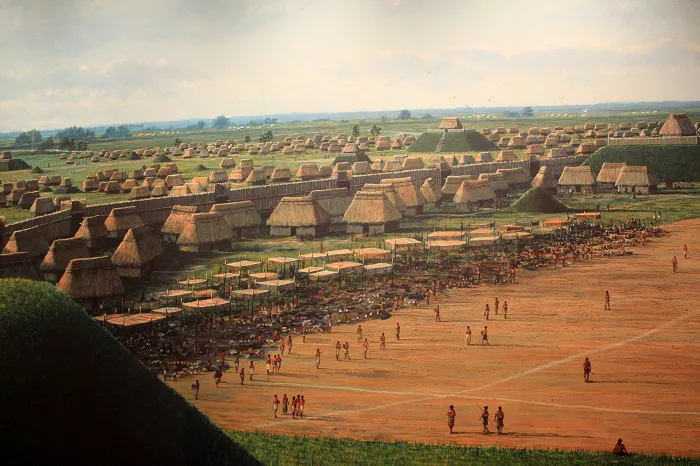U.S. Senators Dick Durbin and Tammy Duckworth have reintroduced legislation aimed at securing a National Historic Site designation for Cahokia Mounds, a culturally and archaeologically significant site in southern Illinois. The proposed bill directs the National Park Service to conduct a Special Resources Study, a critical step in advancing the designation process.
Cahokia Mounds, once the center of a thriving mound-building civilization, reached its zenith around 1200 C.E. before being largely abandoned by 1400 for reasons that remain unclear. Today, approximately 70 mounds remain across the 2,200-acre park, including the prominent Monk’s Mound—named for the Trappist monks who settled there briefly in the early 1800s.
“Cahokia Mounds is an important natural, archaeological, and cultural landmark that represents the indigenous peoples and landscapes that once made up America’s first cities in the Western Hemisphere,” Sen. Durbin said in a statement. “This bill brings us closer to preserving Cahokia Mounds for future generations through a National Historic Site designation.”
Sen. Duckworth echoed the importance of federal recognition, calling the site “extraordinary” in both cultural and historical value. “I’m proud to introduce this bill alongside Senator Durbin to conduct a Special Resources Study on the site and make progress toward properly recognizing this site at the federal level,” she said.
The area’s archaeological significance extends beyond the Cahokia Mounds State Historic Site. During construction of the Stan Musial Bridge, major excavations in Mitchell, East St. Louis, and Fairmont City uncovered substantial Mississippian-era remains, resulting in what was, for a time, the largest archaeological dig in the United States. Historically, the greater St. Louis region was known as “Mound City,” although only Sugar Loaf Mound remains in the city today.
At its peak, Cahokia was among the most populous settlements in pre-Columbian North America. Archaeologists estimate that travelers navigating the Mississippi River would have encountered small farming communities of 50 to 100 people—until arriving in the Cahokia region, where towns held populations of 3,000 to 5,000 on either side of the river and as many as 15,000 in Cahokia itself.
Currently managed by the Illinois Department of Natural Resources, Cahokia Mounds could come under joint management by federal, state, and local agencies if the National Historic Site designation is granted. This renewed legislative effort follows earlier initiatives, including a 2016 campaign by the Belleville-based HeartLands Conservancy and a major push in 2021.
“HeartLands Conservancy is delighted that Senators Duckworth and Durbin have reintroduced the bill,” said Mary Vandevord, president and CEO of the organization. “This is another important step toward a national park service designation.”
Support for the designation has also come from local governments, with Madison and St. Clair counties passing resolutions in 2019 backing the initiative.
Cahokia Mounds currently holds multiple honors, including being named a UNESCO World Heritage Site, a National Historic Landmark, and a listing on the National Register of Historic Places. Experts have compared the archaeological importance of the region—from the Koster Site near Kampsville to Cahokia Mounds—with that of the Nile Valley in Egypt.

